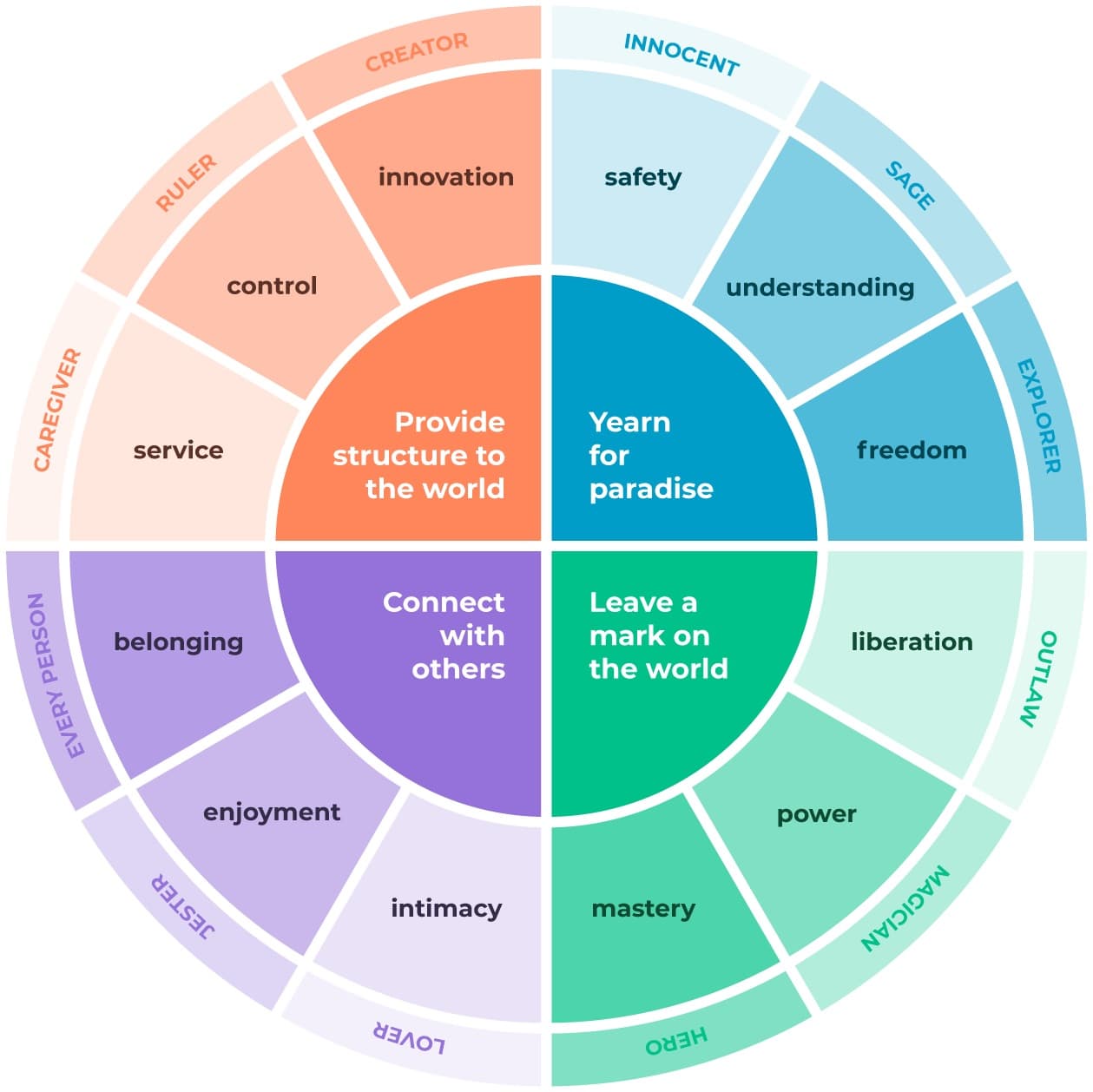Brand Guide
your brand is not just a logo
-
A deliberate, cohesive, and well executed brand identity can differentiate your company from its competitors and position you as a thought leader in your industry.
- Download PDF

What's Covered?
Experts

CEO

VP of WebOps
definition of branding
Branding is a difficult word to define, because it encompasses every part of your business. Yes, it’s your logo, but it’s more than that.
It’s the culture your employees exude, it’s the sign outside of your building, it’s the feeling customers get when they interact with your company.
All of these elements together (and more) create what it means to you and your company—to be a brand.
The best companies are cognizant of their brand and work to create a cohesive experience for every customer, so they know what to expect when they come back.
the first step: brand promise
The first step when creating your brand is to think about your brand promise. What does your company want to say to its past, present and future consumers?
What type of experience are you hoping your customers will have when interacting with your brand?
By aligning your company’s mission, vision, and values, with your goals—you’ll be able to more clearly understand where you want to go, where you want to be, and what you want your consumers to experience.
This also entails narrowing down who your customers are or which market you’d like to target. You can’t promise to deliver them value if you don’t know who "they" are.
Doing buyer persona research to develop out who your ideal customers are, their demographics, behavioral patterns, motivations, and goals will help you determine which branding elements will assist in targeting that audience.
One of the worst mistakes you can make is not paying attention to your ideal customer.
It may be difficult to realize that how you see your company is not how your potential customers see it.
brand archetypes
Thinking about your brand through the lens of the 12 archetypes might help you narrow down what your brand promise is and can begin to shape your brand messaging.
The archetypes range from The Magician—striving to make your wildest dreams come true (Disney), to The Hero—making the world better by being the best (Nike).
Review the archetypes on your exploration of identity, voice, and brand experience.

elements of a brand
logo
Your logo is a symbol used to visually represent your brand. Many people think of their logo as their entire brand, but it’s just the tip of the iceberg.
colors
When looking at a company's website, products, or anything associated with the brand–the first thing you notice, whether consciously or subconsciously, is their colors.
Companies deliberately choose their brand colors based on the emotions each color evokes. For example, many tech companies and banks choose blue because it’s considered a trustworthy color.
iconography
Icons are visual storytellers that direct your customers through your website, app, packaging, and more. Your iconography should be cohesive and match user intent.
For example, when a user sees a horizontal triangle on a music app, they expect music to play when it’s clicked.
typography
Your choice of typeface can either add or take away from your messaging. If you’re a tech company and you choose a font like Disney’s, it can easily give the reader mixed signals.
If the header and body fonts don’t look good together, you could come off as cheap or unorganized.
Your typeface will be on every piece of messaging your company puts out, so make sure it’s legible and is harmonious with your brand.
website design
A custom website is an extension of your brand. It’s the 24/7 salesperson and digital representative of your company.
Inject your brand standards into your website design to differentiate you from your competitors.
voice and tone
Finding the right voice and tone for your brand can challenging but once you discover how to speak to your buyer personas, you'll unlock the key to a successful brand experience.
Does your target audience respond to fun, quirky messaging or more serious, jargony copy? How you speak to your audience says a lot more than you think.
Deciding on the voice and tone your buyer personas respond to will shape all of your messaging and lead you toward successful conversations in the future.
traits
Your brand traits are the human characteristics that are applied to your company’s messaging.
For example: Sincerity, intelligence, excitement, and adaptability are all examples of brand traits.
Aligning your brand with one of the 12 archetypes can be a great place to start when defining traits.
photography and graphics
Creating a cohesive look and feel starts with deciding on the guidelines that will dictate all visual content.
Do you want to use stock images, or take real-life photographs of you and your team? Do you want images with a lot of sunlight? How big can your graphics be?
eciding what you should and should not use when it comes to photography and graphics will help align your designers and marketing team so visuals are consistent throughout all channels.
social media
Social media is a big player when it comes to delivering content and creating a great brand experience for your target audience.
Social channels like Facebook, Instagram, Twitter, and LinkedIn give your customers a direct connection to your company; enabling you to humanize your brand and more closely align with your audience.
Social media allows you to have conversations with customers and potential customers faster than ever before. It also means gaining or losing your followers’ trust faster than ever before.
Your social presence should follow your brand guidelines, so when your customer interacts with you on social media, they’ll know what to expect.
employees
Many companies don’t think about how their employees factor into their brand strategy. Hiring employees that fit your brand and shape your culture can be your greatest asset when trying to maintain your brand’s integrity.
Your employees can be the biggest champions of your brand. By creating a culture code that highlights the values and traits you look for in an employee, you can begin to attract the right people.
customer experience
Your customer experience is the core focus of your brand. When we look at things like developing a voice and a tone, it's all about how your customers, or potential customers, perceive your brand—hopefully as trustworthy and authentic.
So, really developing and understanding your ideal customer is the key to being able to deliver a great experience wherever they may encounter your brand. The customer experience doesn't just end with them visiting your website.
It goes all the way through the sales process. When they talk to someone on the phone, does the person on the other end represent your brand? Are they saying the right things? When a prospect becomes a customer, how are they treated?
The customer experience is number one when thinking about your brand. Essentially, your brand is the overall feeling customers get when interacting with your company.
brand equity
You may have noticed that Bounty paper towels cost more than the off-brand. Although they both probably absorb about the same amount of liquid, Bounty costs more.
Why? Because they’re the quicker-picker-upper! Bounty has positioned itself as a trustworthy leader in paper towels through advertising and one catchy jingle.
Because the off-brand paper towel companies don’t spend as much money on advertising, they’re not top-of-mind when consumers go to buy them. So Bounty can charge more money for a roll of paper towels, because of its brand equity.
Brand equity is essentially the trustworthiness of a brand in dollar signs—and the way to a trustworthy brand is through consistency and cohesiveness.
The same can be done to your brand. If you spend time creating a cohesive brand, your company will look trustworthy and be memorable to a consumer throughout their buyer’s journey, and it will differentiate you from competitors.
A good overall brand experience will establish your company as credible and intelligent—with the amount of businesses out there trying to sell to consumers, a trustworthy brand is worth more.
the importance of a style guide

A brand style guide is a physical representation of everything that makes up your brand.
It’s useful, especially if you're a larger company, to have a document that tells employees across departments and outside vendors who you are as a brand, how you should sound, what types of language you should use, and how you visually should be represented.
Whether it's providing them with approved colors, typography or other types of visuals.
Being able to quickly convey to a marketing team, “Here's the type of imagery that we use in our advertising,” all the way down to things as simple as how your logo should look in various situations, is important to maintaining a consistent brand image.
It will also dictate your company’s voice, tone, who you write content for and more. It will have information such as: do you use the Oxford comma? Do you use the em dash? Is your voice fun and quirky? Is it serious and controlled?
A style guide documents every branding decision your company has made, so when you’re training new employees, hiring a freelance copywriter, or using a third-party printing company, everything is consistent.
rebranding vs. brand refresh
A rebrand is a process of completely redoing your current brand, and that process involves looking at your customers, looking at your business goals, evaluating your voice and tone, and updating or completely redoing your brand visuals.
After a rebrand, your company’s brand will have a whole new look and feel. In comparison, a brand refresh is a shorter process where we update and modernize the visual elements of your brand, including colors, typography, and logo.
why do i need to rebrand? why do i need a brand refresh?
In the case of doing a total rebrand, your company may want to start targeting a new audience, therefore, it would change the voice, tone, imagery, and more to connect with that new audience.
Another reason is if your company went through bad publicity and it’s affecting sales. An entire rebrand, including a new logo, website, voice, and tone makeover, may allow you to regain the trust of customers and start building your brand image again.
A brand refresh is less drastic and involves taking a look at different pieces of your brand and giving them an update.
For example, Pepsi has changed its logo many times throughout its history to give it a more modern look and feel. A brand refresh may also include a new, updated website that includes an improved user experience to serve your customers better.
Overall, a brand refresh is a way to modernize parts of your brand in order to attract new customers.
when should you consider a rebrand or a brand refresh?
It really depends on the company. There are some brands that have lasted a very long time, and some brands that do a refresh every couple of years.
If you want to see growth and haven’t been seeing results, or if your brand feels outdated, it may be time to consider a rebrand or brand refresh.



